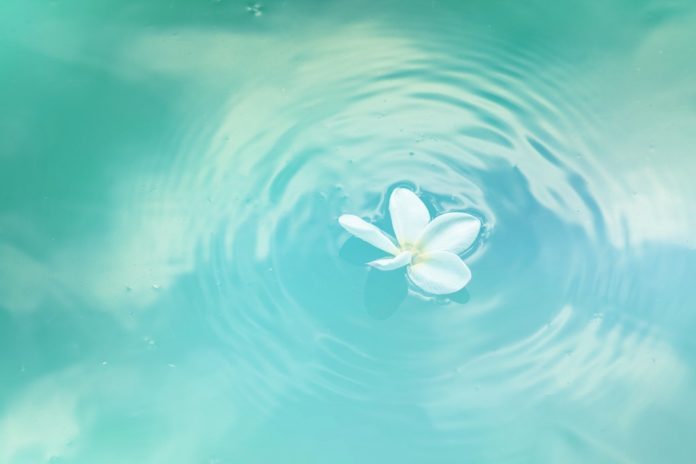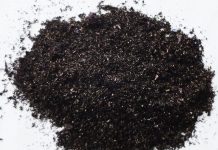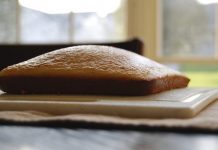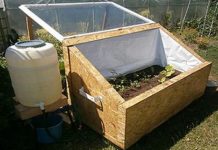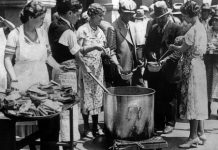There is some debate surrounding bleach in the prepping community. Bleach is a powerful cleaning agent; which can even be used to purify water; but it has a short shelf life and many storage restrictions. Those who are planning for long-term SHTF scenarios don’t like to rely on bleach as their disinfectant.
Yet; to disinfect after a flood; or during an epidemic; you can’t get better than bleach. If you’re relying on antibacterial soap for those times; this article is going to convince you that you need to up your game. Yes; bleach is a short-term solution; even if you’re willing to learn how to make it yourself; but I think it has a place in any prepper’s storage.
The Basics of Bleach
There are many different kinds of bleaches. We’ll be talking about three of them in this article.
- Chlorine-based bleaches are the most common. Sodium hypochlorite is based on chlorine and is the most common household solution. It is the thing we usually mean when we say “bleach.”
- Our second bleach is one you can make at home; from calcium hypochlorite. It is one of many bleaching powders; and it’s stable in a solid form; giving it a longer shelf life than liquid bleaches. In fact; it will last up to ten years!
- Hydrogen peroxide is also a bleach. As you can tell from its name; it is not made of chlorine; but it still oxidizes (there are some forms of bleach which don’t work from oxidization; called reducing bleaches; but they aren’t very useful for us). Hydrogen peroxide; at a 3 percent concentration; can be used as a wound disinfectant; albeit carefully.
The other two bleaches are primarily useful for peppers for cleaning surfaces when there is a disease outbreak; or for cleaning up after a flood. Possible; but less common uses include sterilizing objects like medical instruments and purifying water (calcium hypochlorite is the active ingredient in water water purification tablets).
Basic Bleach Safety
Bleach cannot be mixed with any other kind of cleaning agent. If you use vinegar as a cleaning agent; as I do; be especially careful.
If your usual cleaning agent has ammonia in it (Windex and glass cleaning products usually do) then the mixture will create some other dangerous substances; most of which will also harm your lungs. If you’ve used one cleaner and want to use another; just rinse the surface thoroughly and then wait for it to dry before using the next product.
When using bleach; wear rubber gloves and eye protection. Always wash your hands after using bleach. Always add bleach to water; not water to bleach. You cannot use bleach on bare metal surfaces.
If you get bleach on your skin; in your eye; or if you ingest it; call poison control (1-800-222-1222 in America). Even if this is a SHTF scenario; you should still try to seek medical attention.
If the government has collapsed and you absolutely can’t find a doctor; you can follow the guidelines below; which were taken from Web Poison Control and the NDSU’s Agriculture department (bleach is used in agriculture).
- If bleach got in your eye; immediately rinse with running water for 15 to 20 minutes.
- If bleach got on your skin; remove any contaminated clothes and then immediately rinse with running water.
- If you ingested bleach: in the form of a low concentration hydrogen peroxide; you will see bubbling at the mouth; especially if a child ingested it. A small sip of water or milk will help calm their stomach. There is usually no long-term harmful effect from this.
- If you ingested bleach: in the form of other bleaches; or high concentration hydrogen peroxide; drink a glass of water. This can be serious; so re-double your efforts to seek medical advice.
- If you’re breathing in bleach fumes and feel a burning sensation; or any discomfort; get to fresh air right away. Have someone open windows and circulate the air where you were cleaning. People with asthma may be particularly susceptible to irritation from bleach fumes.
- If an animal has been exposed to bleach on their fur or skin; wash them with running water and a tiny bit of soap. If they drank bleach; have them drink water. For cats; you may need to give them tuna water to get it down.
Proper Storage of Bleach
Store your bleach in a dark place; away from other cleaning products. Bleach must be kept no warmer than 70 degrees Fahrenheit. If you can keep your bleach at 60 degrees Fahrenheit; that’s ideal. If the bleach gets too hot or too cold it will degrade faster.
This means you should try not to store bleach near the stove; in the garage; or anywhere else where it might be exposed to temperature fluctuations. Bleach also “enhances” combustion; so keep that in mind if there is a fire.
Bleach Shelf-Life
You also have to be aware of bleach’s short shelf life; because it does lose potency over time. The correct potency is absolutely necessary when you’re using bleach to sanitize; or to purify water.
After six months on your shelf; most brands of bleach are no longer usableto reliably purify water or to reliably sanitize anything. If you have the ability to test your water; like with a backyard pool; you can keep using the old bleach; you’ll just use more of it.
Depending on your brand; the shelf life may be even shorter. Higher concentrations of bleach; like 12.5 percent; will lose their effectiveness more quickly than 6 percent; because there’s more chlorine to lose. Unfortunately; bleach is just a very unstable chemical.
You’ll find companies like Clorox or Clean Shot say you can use bleach for a year; or more in tablet form. That’s because they are looking at laundry uses; not life-or-death sanitation needs during a SHTF event.
Though; for a year the bleach should still be reliable in your laundry machine; or for casual surface cleaning. But you should immediately write the date on your new bottle of bleach; so you know for sure when it’s too old to be used.
Make Your Own Bleach
One way to get around the short shelf-life of bleach is to instead keep on hand the ingredients to make your own bleach from calcium hypochlorite; also known as pool shock; for when you need it. You can buy calcium hypochlorite itself; in a powder form; and then mix it up only when you need it; to extend it’s shelf life.
You have to buy pure calcium hypochlorite; also known as pool shock (but some pool shock is NOT calcium hypochlorite so be careful); from a pool or septic supplier. You might have trouble finding it in small quantities; because you do need a fair bit to sanitize a pool. You’ll end up with more than you’ll use; but at least it’s cheap.
Second; take a look at how much available chlorine there is in the product. The packaging should tell you. For example; the first product I linked to there has 65 percent available chlorine. The second has 73 percent chlorine and is what pool suppliers call high test calcium hypochlorite; or HTH.
If you intend to use the bleach solution to dilute water; the EPA recommends you only use HTH. For safety; we’re only using high-test hypochlorite in the solution below.
In it’s tablet form; this stuff is extremely dangerous. It can combust if mixed with some household products (including greases/oils) and; like other bleaches; it can create deadly gases when mixed with other household products. If it gets wet; it will also create chlorine gas. Store it very securely and ensure it does not leak out.
- dry
- cool
- dark
- secure from spills
- away from other household products
Wear protective equipment when using it; including eye protection and rubber gloves. Always make bleach outdoors; where there is proper ventilation. Always pour bleach into water; not water into bleach.
- Pour yourself one gallon (or 4.5 litres) of pre-filtered; clear; water. Cloudy water reduces the strength of bleach.
- Add 242 grams; or almost exactly one cup (1.02 cups) of high-test calcium hypochlorite to the mixture. Using a scale is best.
This mixture is now 5.5% available chlorine; according to Tactical Intelligence (the math checks out to me); which is precisely the amount you have in household bleach. When in doubt; use a chlorine test kit to ensure you’ve produced the right solution.
You can now use this concentrated bleach solution as you would use household bleach. Which means; it still needs to be diluted further for most purposes and cannot be ingested! We’ll talk about how you need to dilute this solution for different purposes in the next section.
But first; note that this concentrated calcium hypochlorite solution will now have the shelf life of your household bleach– six months. It needs to be stored as carefully as household bleach. It is just as corrosive and dangerous as household bleach.
Also; if you want to disinfect water with your calcium hypochlorite; you can take a more direct route. You can read all about it in Gaye’s article on purifying water with pool shock.
Lastly; some of you truly scientific preppers may be wondering if; instead of buying calcium hypochlorite; you could make your own; truly from scratch. There are such things as chlorine generators that pool fanatics use; and it sounds like you could use such a thing to make your own bleach.
But; honestly; I can’t verify that; so do your own research and tread carefully.In my mind; it’s better to buy a pound of the stuff than try to make it. Calcium hypochlorite does last years!
Bleach Solutions for Sanitation
Now that we have 5.5% bleach; it’s time to dilute it. Most recipes for bleach solutions will assume you start with 5 percent to 6 percent bleach; which usually has to be diluted further for use. You can save yourself some math if you stick to buying this percentage; if not; you’ll have to adjust.
Also; note that bleach needs to be diluted to be effective. If you pour high concentrations of bleach onto a surface it may actually be less clean than if you had used the proper bleach solution. Plus; when undiluted bleach mixes with sunlight it can create a toxic gas. So dilute your bleach!
When cleaning with a product; it’s important to know what it is; and is not effective against. So here’s that information for bleach.
Tough bacteria or viruses bleach can be effective against include:
- Staphylococcus aureus
- MRSA
- Salmonella (vinegar and ammonia can also be effective)
- E. coli (vinegar and ammonia can also be effective)
- Norovirus
- Clostridium difficile
- HIV
- Hepatitis
Bacteria or viruses bleach is less effective against include:
- Giardia (can be eliminated from water by most physical filters)
- Cryptosporidium (can be eliminated from water by most physical filters)
1. To Decontaminate After Floods
For a bleach solution to be used after flooding we went to the CDC. It recommends you make a bleach solution that is 1 cup bleach (240 mL) to 5 gallons of water (18.9 L). Always use soap and water on the surface first. Rinse with clean water. Then apply bleach solution and allow to air dry.
The same solution can be used to clean undamaged canned goods after a flood.
2. To Clean Mold off Hard Surfaces
The CDC also suggests a bleach solution for use on mold growth; It is stronger than the flood solution; at 1 cup bleach (240 mL) to 1 gallon of water (3.8 L). You need to use soap and water first; then scrub; then rinse; then use the bleach. Allow to air dry.
3. To Decontaminate Clothing; Tools; and Equipment
This solution is from the Occupational Safety & Health Administration. They suggest you use soap and water to decontaminate objects; but add that a ¼ cup of bleach can be added to a gallon of water for decontamination. Submerge objects for 10 minutes. Then hand-wash the object and; finally; let it air dry.
4. For Epidemic/Pandemic Disinfecting
The CDC has a basic guide to bleach solutions. Generally; a one part bleach to nine part water solution (also known as a ten percent or 1:10 solution) is good for disinfecting surfaces and objects during disease outbreaks; as long as you leave the solution on the surface for five minutes.
According to the WHO; you can also make a 1:100 solution; taking one cup of that 1:10 solution and combining it with 9 cups of sterile water. This can be used to sterilize medical equipment; bedding; rinsing the gloves of medical professionals; etc. Always use it for ten minutes.
To make a 1:100 solution directly from calcium hypochlorite (70 percent chlorine availability) use a half tablespoon of calcium hypochlorite for ten litres of water.
The EPA has a list of disinfectants for various kinds of concerning illnesses/diseases. This includes Norovirus; Tuberculosis; Hepatitis C and Clostridium difficile; just to name a few. Plenty; but not all; of these products are just a bleach with a 1:10 dilution; which you can replicate with your own household bleach.
Note that you need to allow the bleach to contact the surface for a period of time. For example; the government of Canada specifies that either a 1:10 or 1:100 solution of bleach should be on a surface for at least 10 minutes to render it sterile from Ebola.
Speaking of Canada; on the government of Canada’s “Pathogen Safety Data Sheets” page; you can find the proper bleach solution for essentially any pathogen. This includes botulism; Epstein-Barr; various types of E. coli; and the common cold (Rhinovirus); just to name a few.
Note that they sometimes refer to bleach as bleach; or hypochlorite; or chlorine (for the truly nasty stuff; it seems) and use different methods of naming bleach solutions. You can use this document to help you understand what the various solutions mean.
If the disease outbreak is some illness not yet known to man; it’s important to listen to experts about what cleaning regime is best to use. Bleach is not the best option for everything; and there may be a chemical reason the illness is not vulnerable to bleach.
For example; Giardia and Cryposporidium can sometimes dodge bleach because they are water borne and have a kind of protective shell. When there is no information available about the disease; use the top concentration of bleach (1:1000); and soap and water; back to back.
Also; you should make a fresh bleach solution every day during a disease or illness outbreak.
5. To Sterilize Medical Instruments
Gaye has written a whole article on how to sterilize medical equipment. If using bleach; you create a solution and soak the instruments in it.
“Soaking in bleach (Sodium or Calcium Hypochlorite). 15-30 minutes in a 0.1% solution of bleach will disinfect instruments but no longer or rusting will occur. Instruments must be rinsed in sterilized water afterward.”
Bleach for Drinking Water
The last thing you might be interested in using bleach for is purifying water. But be careful; bleach does not remove ALL microorganisms; so always filter your water first. Boiling is always a better method of purifying water; and the EPA only recommends you bleach water when you can’t boil it.
That being said; the EPA recommends 8 drops of 5.5 percent bleach to one gallon of water. Let the solution sit for a half hour before drinking.
Cloudy water may have minerals in it; which reduces the strength of bleach. If your water is still cloudy after filtering; double the bleach. Gaye had written a beautiful piece on using pool shock to purify water.



